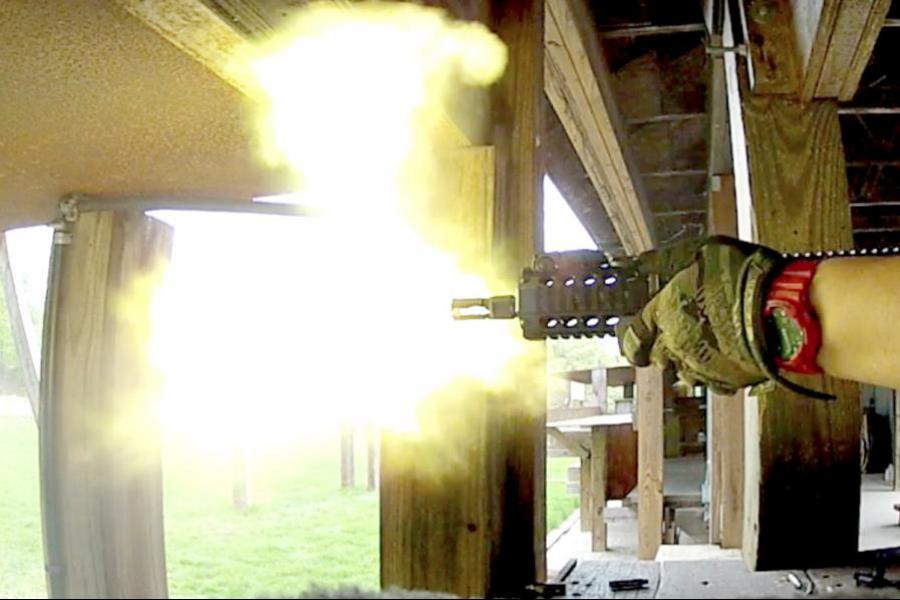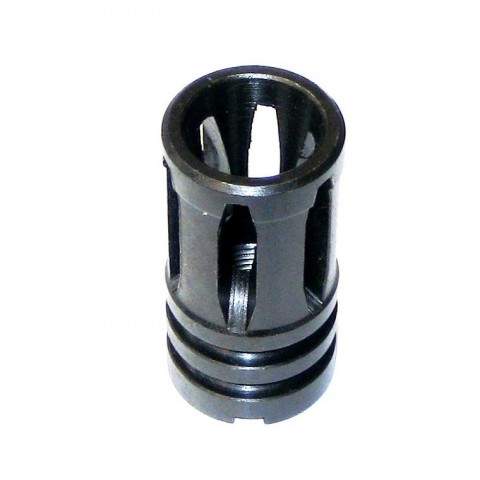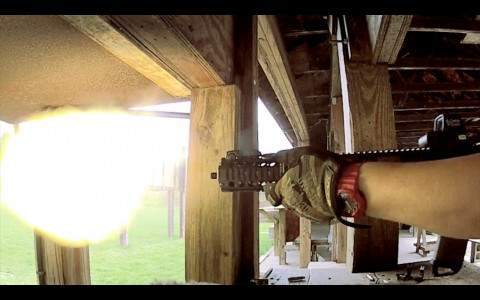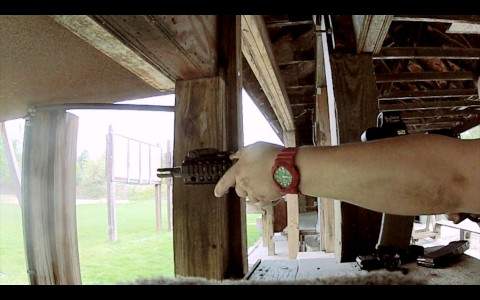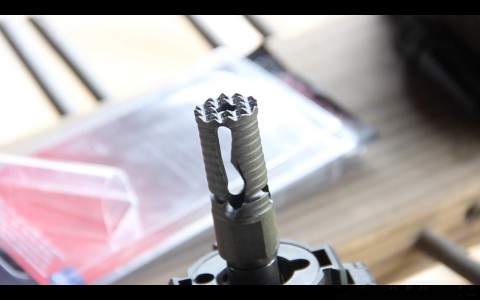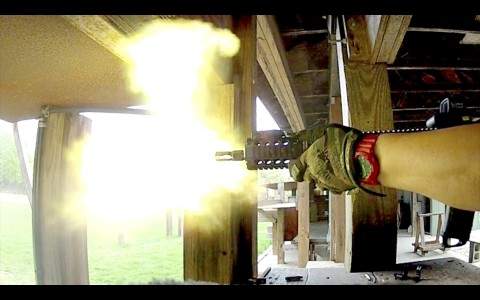Fireballs look pretty cool, and thats a fact. Some people get off on recoil and the more kick the better for them. Others may see either of these features of a rifle as a downright problem.
Who knows, maybe you have just gotten to a point where you know a little more about your rifle and you know you want to make some modifications that change it’s performance. This article is here to help you understand the differences between the two muzzle devices and how they will change your rifle’s performance and possibly your shooting style.
Let’s start with the Flash Hider since it is something that in some form or another comes on most off the shelf AR’s. The Flash Hider’s main purpose is to… you guessed it…hide flash. This is what most off the shelf AR’s usually have threaded on the barrel.
When you fire a round, it is in fact a small explosion and all that fire, gasses and fouling have to go somewhere. As the gases move up the barrel they are still burning, and as long as there is more to burn, you will get a nice big ball of fire as seen here with no muzzle device.
A Flash Hider usually redirects the gasses and combustible material along the edges of the devices instead of the big ball of incendiary material that comes out when left unchecked. By channelling those gasses in an outward pattern away from flame, the flash is “suppressed” and you get significantly less fire balls out of the end of your rifle. The one pictured here is a Smith Enterprises Vortex.
A Compensator is a different situation altogether, but sometimes you can get the benefit of both worlds. A Compensator, or muzzle brake’s main purpose is to redirect those escaping gasses in a purposeful direction. When you direct gasses in a specific direction, the amount of actual pressure built up in your barrel can actually counteract some of the effects of recoil. By directing gasses in an upward, a sideways or even a reverse direction can help aid in muzzle flip or rise and even help reduce felt recoil or “kick”. Many have a combination of these directions to achieve the desired result. The Compensator picture here is a Troy Industries Medieval Muzzle Brake.
This particular Muzzle Brake ports up and to the sides which is pretty easy to see when you get a good look at the direction of all the fire. This shot was selected because it clearly demonstrated where all that combustion and force is being directed so you, the reader can easily distinguish how it works.
At the end of the day, it is not a roaring campfire, this image was taken from 2 frames of video shot at 120 frames per second. New shooters can probably expect to actually “see” a burst like this infrequently (Read: Not Often at all) as your vision is primarily focused on the target or the sights. Cameras catch everything, as do Night Vision Goggles which is why most AR’s ship with Flash Hiders more often than Compensators.
All images were shot using a standard 1:9 twist chrome lined barrel with bulk Federal 55gr. FMJ 5.56. I hope this helps differentiate the different devices so you can better decide which one is right for your needs and your rifles main purpose. As your knowledge and rifle evolves, or maybe you build a rifle, who knows…? Well, you will thats who. Enjoy the video!



